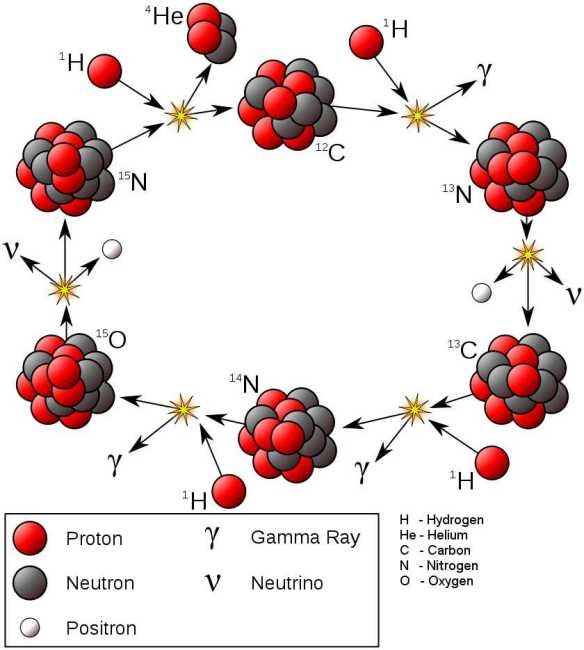In the Carbon-Nitrogen-Oxygen cycle, four protons fuse, using carbon, nitrogen and oxygen isotopes as catalysts, to produce one helium nucleus, two positrons and two electron neutrinos. The positrons annihilate with electrons, releasing gamma-rays. The carbon, nitrogen, and oxygen isotopes are essentially a single nucleus that goes through a series of nuclear processes in an endless loop, as shown in the diagram to the right.
In the early Universe, the Population 3 stars that formed comprised only hydrogen and helium, so were unable to use the CNO cycle, however massive or hot they were, until sufficient quantities had been synthesized. Currently, Population 1 stars generally form with sufficient quantities of these elements to use the CNO Cycle. This, however, puts an upper limit on the size of about 150 solar masses.
In the early Universe, the Population 3 stars that formed comprised only hydrogen and helium, so were unable to use the CNO cycle, however massive or hot they were, until sufficient quantities had been synthesized. Currently, Population 1 stars generally form with sufficient quantities of these elements to use the CNO Cycle. This, however, puts an upper limit on the size of about 150 solar masses.
CNO Cycle



